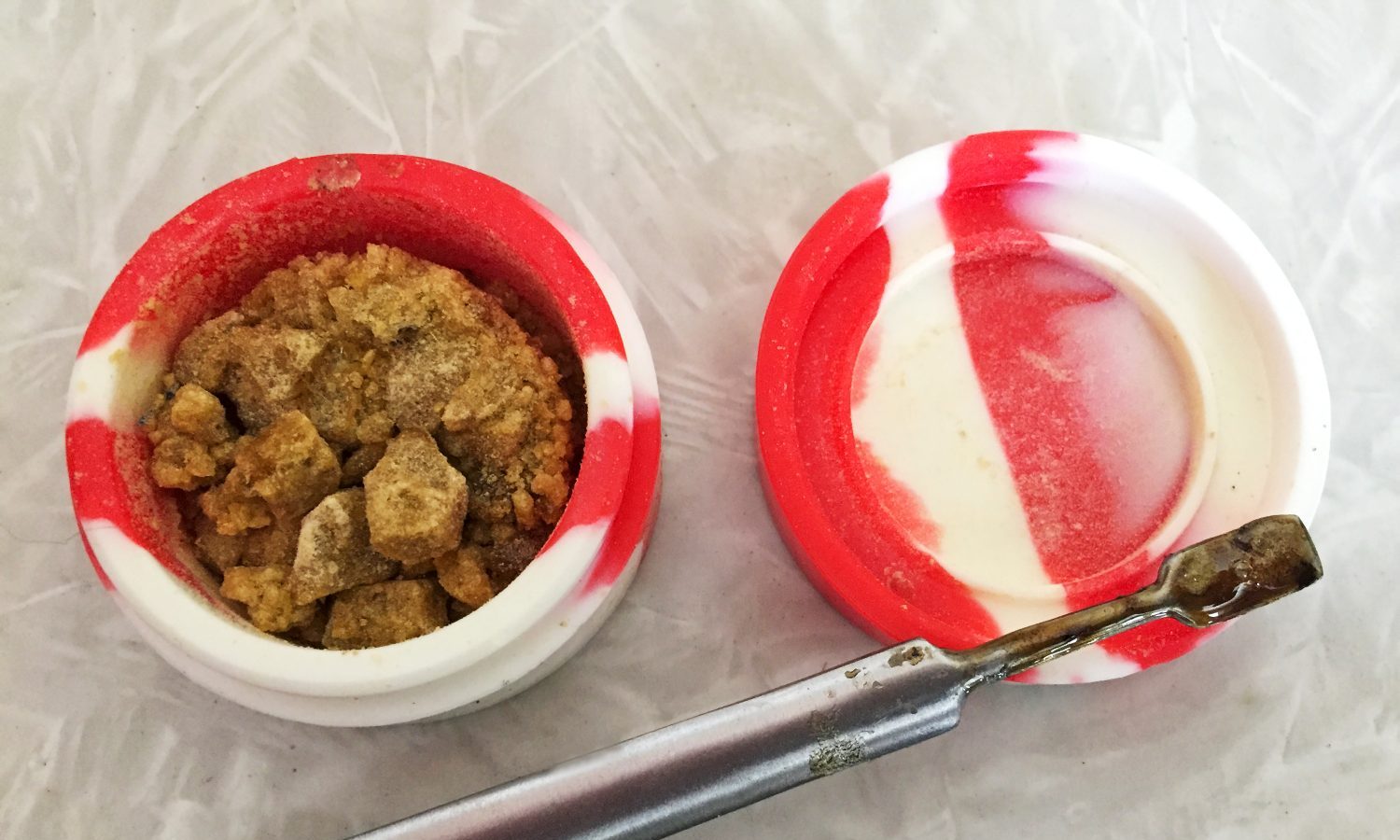
Curious about CRC extracts from cannabis
Cannabis is legal in some form in 40 states and the DEA has been recommended to delay this. It has become more mainstream as the majority of the population believes it should be legal. Smoking, long the most popular form of consumption, has given way to vaping and edibles. As with alcohol, there are dozens of ways to enjoy it – and one of them is CRC.
CRC (Color Remediation Column) is a type of cannabis extract that is produced using a process called “column chromatography.” Originally it began to remove dark colored substances that were left behind during extraction of inferior quality and signaled poor quality to the consumer.
The process makes the extract appear brighter as lighter color extracts are associated with high quality. The idea was to improve the visual aesthetics of a cannabis extract to make it sell better.
CRC has now become a common practice used by legal and illegal manufacturers to improve the appearance of cannabis extracts. CRC has evolved and is now used to remove pesticides, unpleasant flavors and other desired byproducts.
CRC is most commonly used with butane hash oil. The color of low-quality hash oil changes from almost “black or dark brown to light gold or even white” when subjected to CRC.
What is CRC extraction?
CRC extraction is a post-extraction process that uses technology to improve the appearance of cannabis extracts and concentrates.
Column chromatography uses a column (often a steel cylinder) and fills it with a filter medium. Common filter media include:
- Activated fuller's earth (for removing paint)
- Activated carbon/charcoal (paired with activated silica gel to remove chlorophyll)
- Activated Silica Gel (used to remove very dark colors from an extract)
- Bentonite clay (for removing colors and impurities)
- Diatomaceous earth (helps with fine filtration)
- Magnesol (for removing colors and impurities)
- Sand (to remove impurities)
- T5 clay (remove colors and impurities)
The cannabis concentrate is then passed through filter media that results in the removal of color-affecting contaminants and other contaminants. Pollutants and contaminants that can be removed (depending on the filter media) include:
- Chlorophyll
- carotene
- Lipids
- Lycopene
- Pheophytins
- Xanthophyll
One of the disadvantages of CRC is that it also strips a concentrate of its terpene content. You can tell whether an extract or concentrate has undergone colon cancer by its smell. It may smell like chemicals or smell overly fruity or earthy, indicating that terpenes may have been mixed in to restore the original flavor profile.
Photo by eskymaks/Getty Images
Is CRC wax harmful to you?
This question is up for debate. A manufacturer using CRC will say CRC is safe, while an advocate for cannabis users may not.
The debate stems from the fact that cannabis laboratory testing, which determines whether a product is safe for consumption, does not currently test on CRC filter media. This allows a cannabis concentrate to be approved for sale even though it contains impurities from CRC filtration.
RELATED: Guess what's gumming up the marijuana world
Some people believe that CRC wax is not safe because:
- There are no regulations or tests for filter media in the final product
- Long-term studies show that miners who inhaled bentonite clay and diatomaceous earth suffered respiratory damage. Vaporizing extracts containing traces of bentonite clay and diatomaceous earth could therefore cause respiratory damage
- Bentonite clay may have elevated lead levels
- Inhaling silica gel can cause respiratory damage
- Manufacturers claim that filter materials are safe to use because the Food and Drug Administration (FDA) has classified them as “safe.” However, the safety approval only applies to ingested foods that could have an impact on the stomach. The approval does not apply to non-inhaled products that have effects on lung tissue
- When CRC manufacturers force too much extract through a filter media at once, the filtration does not work properly and leads to contamination in the final product
- Activated carbon from natural sources can release cancer-causing metabolites such as benzopyrenes
- If the activated carbon medium is not replaced, excessive use can cause the activated carbon to break down and release heavy metals.
 Photo by Cappi Thompson/Getty Images
Photo by Cappi Thompson/Getty Images
If a manufacturer performs CRC extraction properly, the concentrate could theoretically contain fewer contaminants.
RELATED: What is Kief and How to Use It?
If you are concerned about contaminants in your cannabis concentrates, ask your budtender whether the product you are interested in has undergone CRC and what filter media was used.
Key insights into CRC extracts
- CRC (Color Remediation Column) is a process used in the cannabis industry to remove impurities from extracts and improve visual aesthetics.
- The debate surrounding CRC wax is whether or not it is safe for consumption. At the time of writing, cannabis labs do not test for filter media residues, so it is difficult to say definitively whether CRC-processed extracts are safe or not.
- Long-term exposure to some of the materials used in CRC processing (e.g., bentonite clay and diatomaceous earth) can harm respiratory health.
- If you are interested in purchasing a CRC extract, you can ask your budtender what filtering methods were used.

Post a comment: